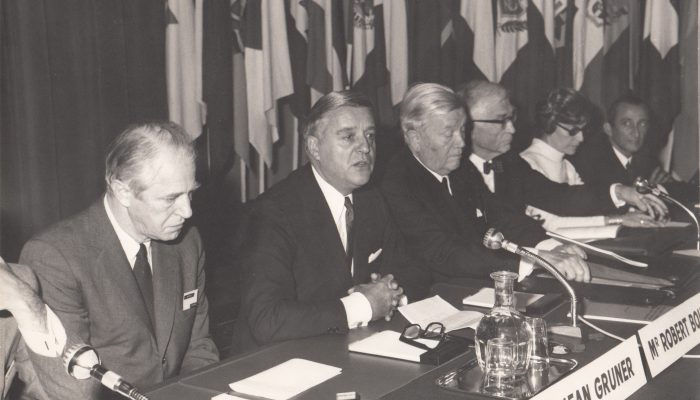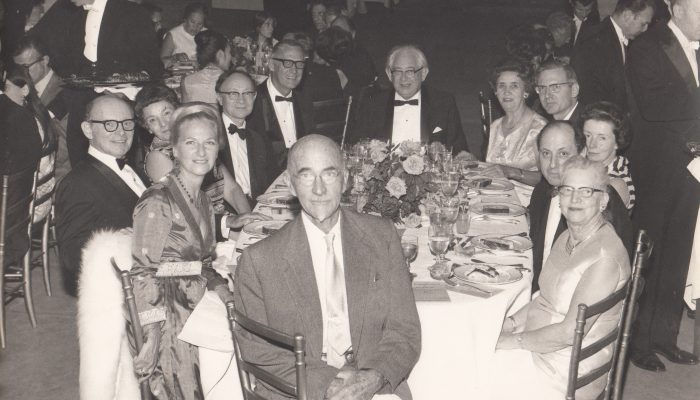History and International Congresses

History
The International Committee of Neuropathology, founded in 1950, was re-formed in Copenhagen in 1967 as the International Society of Neuropathology, a non-profit making scientific organisation.
List of congresses of neuropathology
20th Berlin | 12-16 September 2023 | |
Ist Rome | 8-13 September 1952 | |
2nd London | 12-17 September 1955 | |
3rd Brussels | 21-28 July 1957 | |
4th Münich | 2-8 September 1961 | |
5th Zürich | 30 August-3 September 1965 | |
6th Paris | 31 August-4 September 1970 | |
7th Budapest | 1-7 September 1974 | |
8th Washington | 24-29 September 1978 | |
9th Vienna | 5-10 September 1982 | |
10th Stockholm | 7-12 September 1986 | |
11th Kyoto | 2-8 September 1990 | |
12th Toronto | 18-23 September 1994 | |
13th Perth | 7-12 September 1997 | |
14th Birmingham | 3-6 September 2000 | |
15th Torino | 14-18 September 2003 | |
16th San Francisco | 10-15 September 2006 | |
17th Salzburg | 11-15 September 2010 | |
18th Rio de Janeiro | 14-18 September 2014 | |
19th Tokyo | 23-27 September 2018 |

ICN 2014 Rio de Janeiro
The XVIIIth International Congress of Neuropathology was held in Rio de Janeiro, Brazil, in September 14-18. It was hosted for the first time in Latin America, organized by Brazilian and Argentinian neuropathologists, with the contribution of a highly qualified international scientific committee, which worked hard to produce a very successful scientific program, including many distinguished speakers, that was complemented by a lively and friendly atmosphere in the setting of a wonderful landscape with very enjoyable social events (see programme).
The scientific program covered a full range of interest, promoting the exchange of expertise between the various areas of neuropathology and other fields of neuroscience, including neurologists, neurosurgeons, neuro-oncologists, neuroradiologists, geneticists, basic neuroscientists and others, who contribute with information to aid in the diagnosis and treatment of patients.
Extract from W. H. McMenemey’s Foreword in Matthew T. Moore ed., Archives of The International Congresses and Society of Neuropathology 1952-1977 (Philadelphia, 1978)
‘Neuropathology, though reckoned to be a recent specialty, had its devotees even before Thomas Willis published Pathologiae Cerebri in 1667, but it was only in the first decade of the present century that real progress made and the momentum has gathered with the years. The pathology of the brain and its appendages was at one time the hobby, and indeed sometimes the obsession of dedicated clinicians, the plight of whose patients had served to spur them on in the search for the nature and causes of the underlying diseases, with a view to ensuring more logical and perchance successful forms of treatment.
There were pathologists too who made neuropathology their main concern. All are remembered today and venerated for their labours and for the encouragement they gave to others who followed their example. But, as new techniques developed and as more and more biological subspecialties were drawn into this arena of research, neuropathology became more broadly based, so requiring its own specialised practitioners. Thus comparative neuropathology is an important development of recent years benefiting the health economy of the human race.
The International Society of neuropathology is basically an association of national societies and was so named because the number of neuropathologists in the world was thought to be still sufficiently small as to allow of a collegiate feeling among us. While maintaining its prime role as a coordinating body for the planning of congresses, symposia and widely-based research projects, it is concerned with the interchange of information between individuals and of persons in training between one country and another. In short, the wish is that each member of an affiliated society should at all times enjoy the advantages of that spirit of camaraderie which we so quickly sense at our congresses. It is, too, a society of neuropathology and not just whole-time neuropathologists, for there are many clinicians who fortunately still contribute to our subject, and long may this so continue. Had it not been for neurologists, psychiatrists, neurosurgeons, anatomists and others, conditions well recognised in nosology today might not have been so timely discovered. Because of training and experience, they see things with a different eye and approach problems from other angles. But for their support in the early congresses in particular, our Society would not be so well established as it is today.
Wars, it is said, stimulate research and bring about interchange of scholars and scientists between nations. Several international medical organisations had their origins in the course, or in the aftermath of the Second World War as the result of allies working together; and neuropathology benefited greatly from the settlement of political refugees in congenial medical havens abroad. But such desirable ends can be achieved happily and much more effectively in peacetime through the intermediary of organisations such as our own, without the destruction of lives and resources which wars inevitably cause.’






















